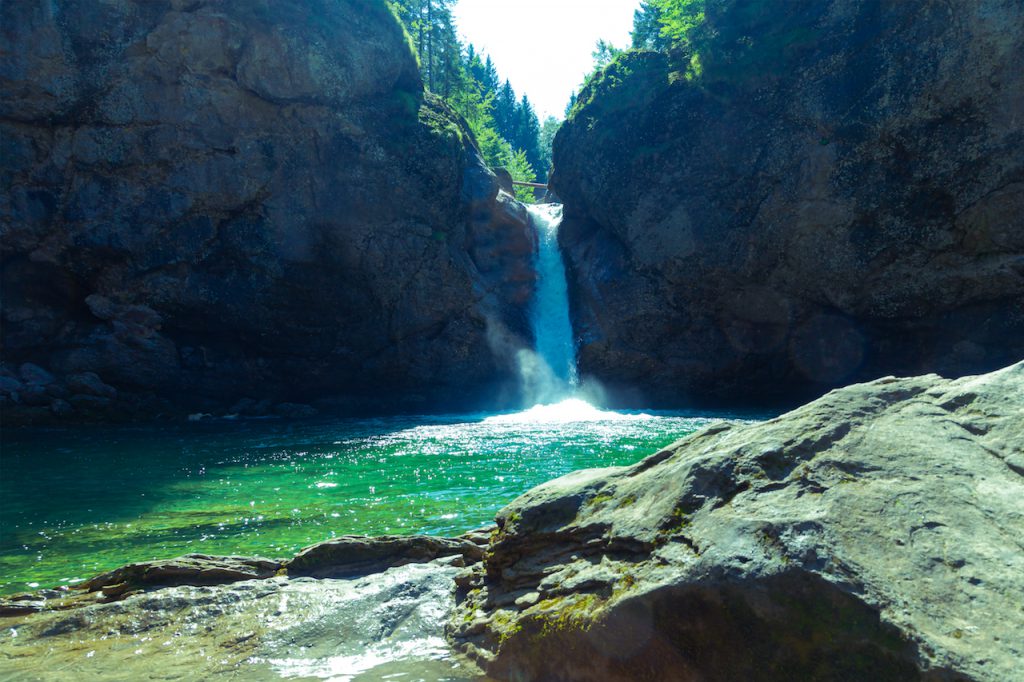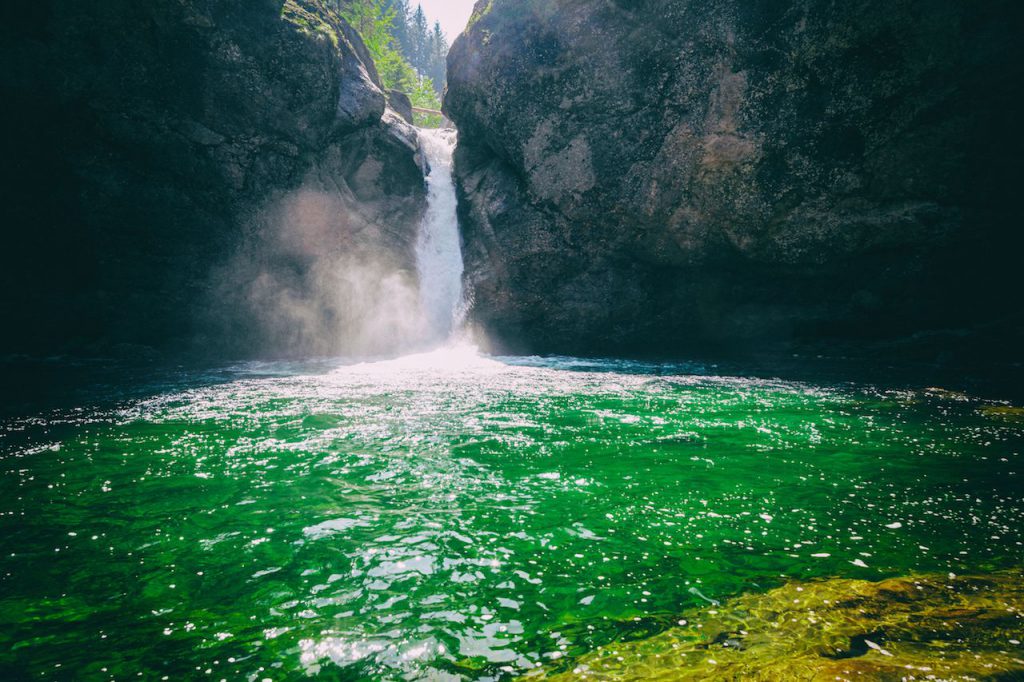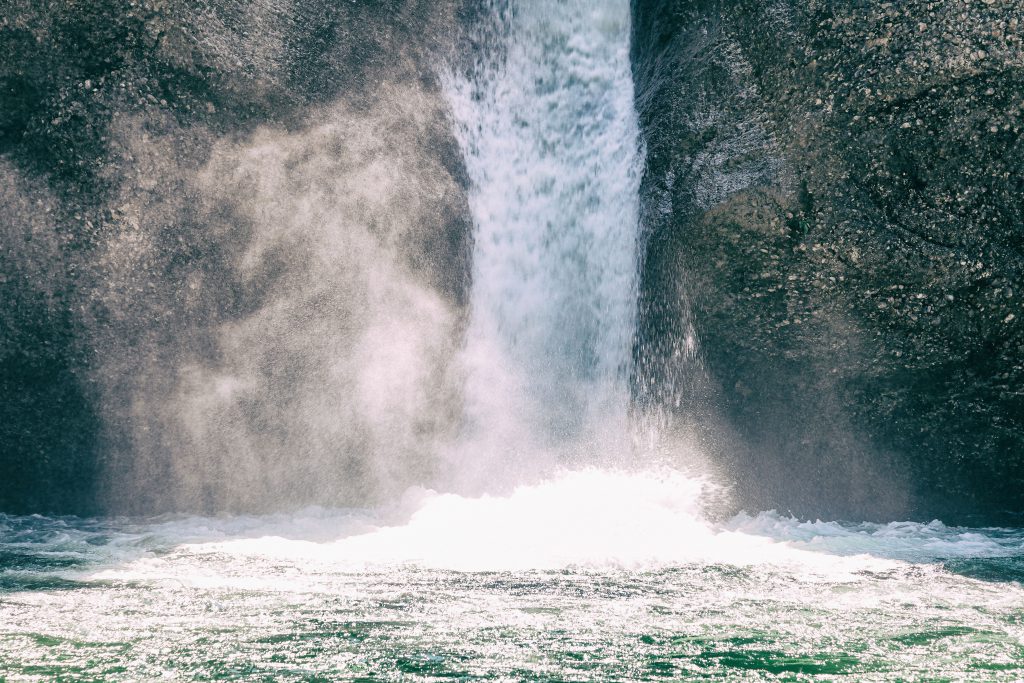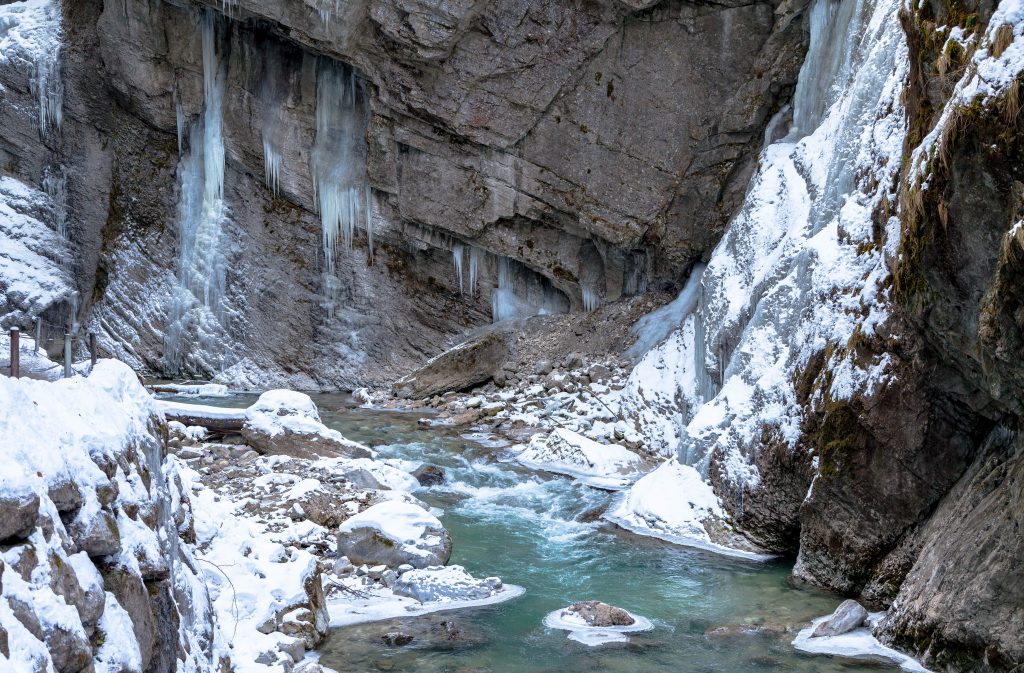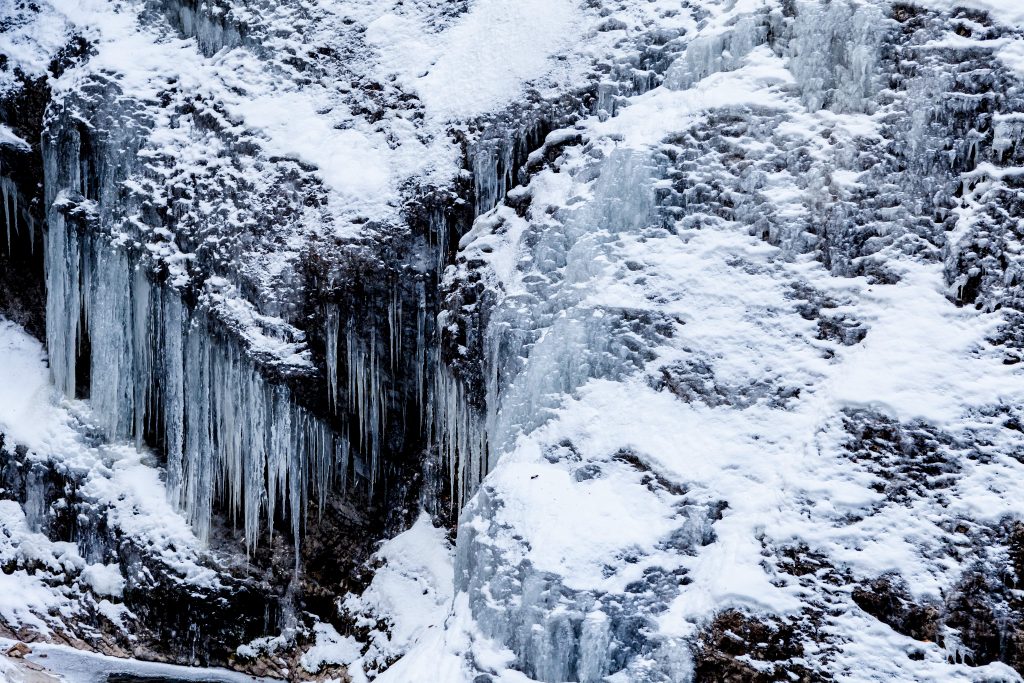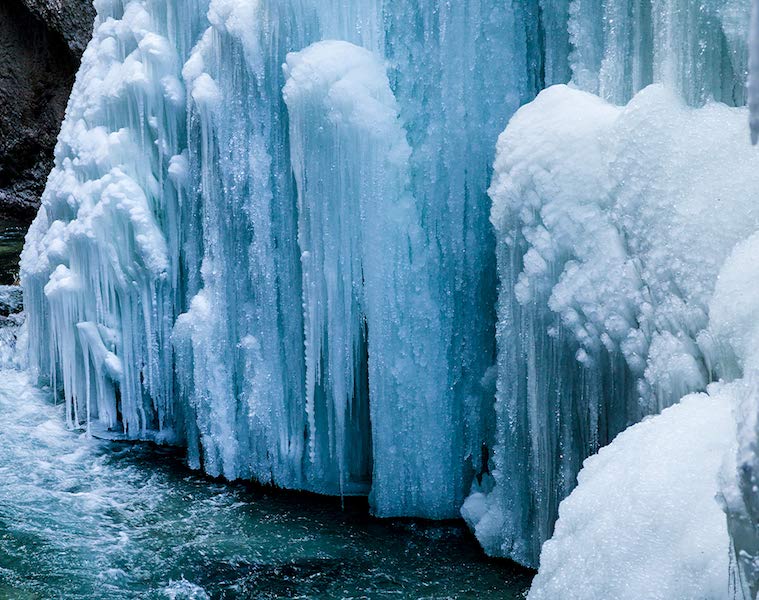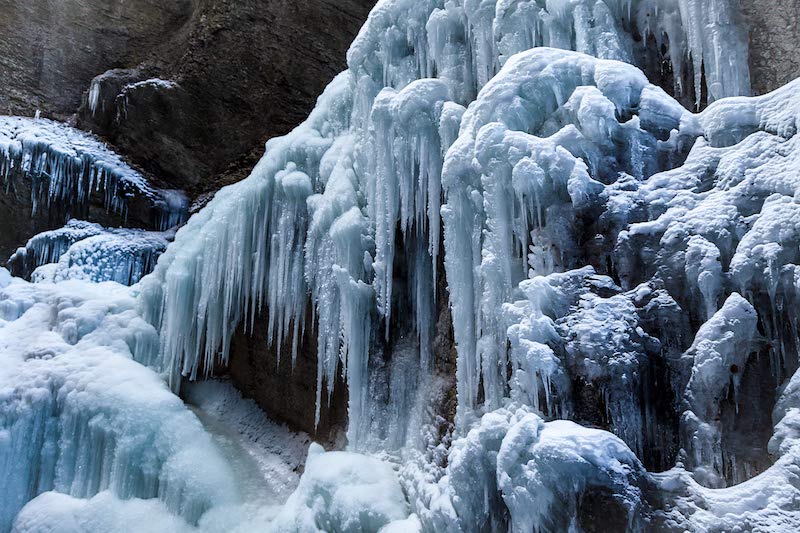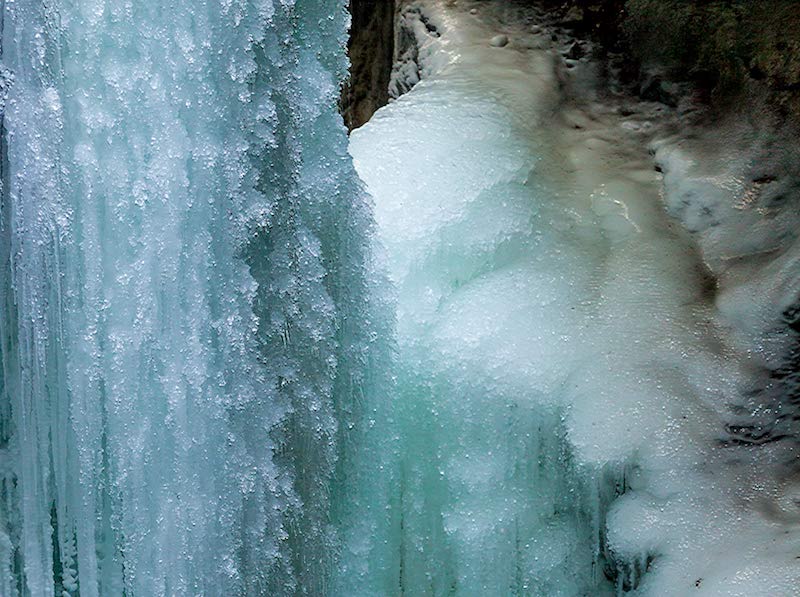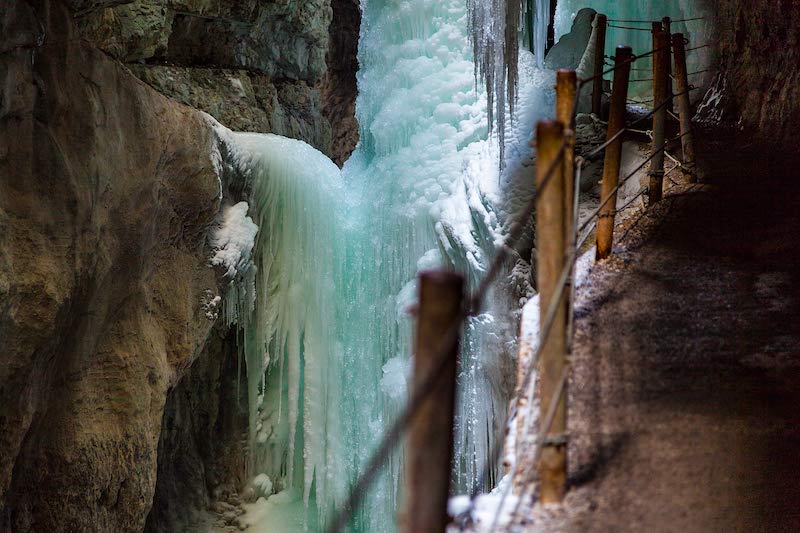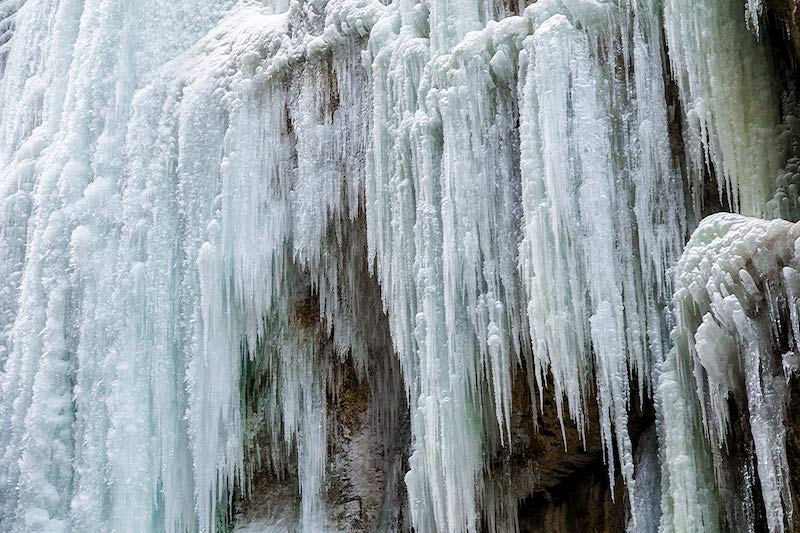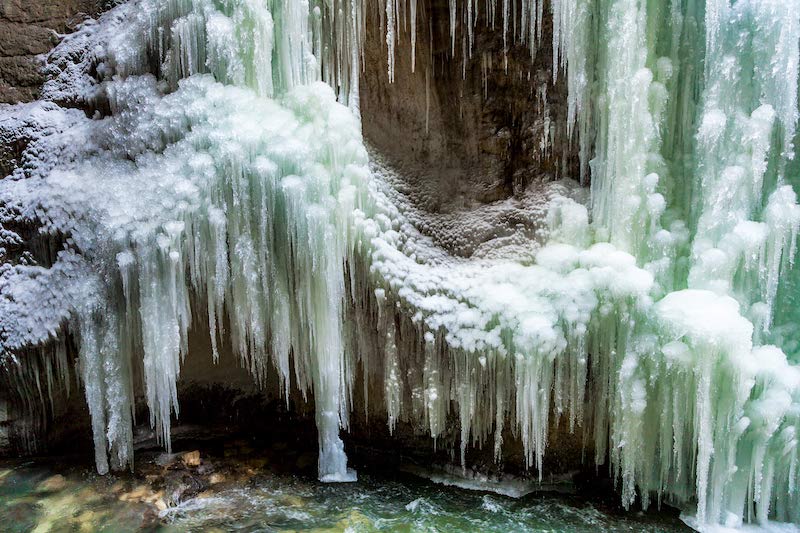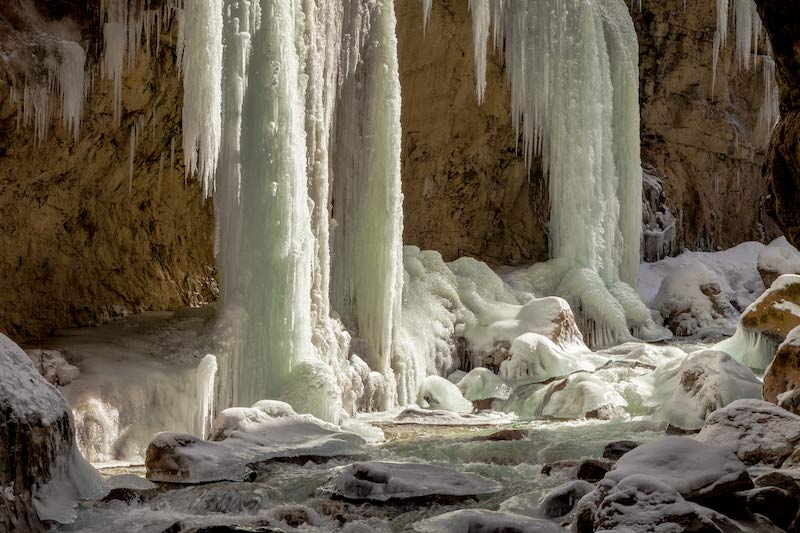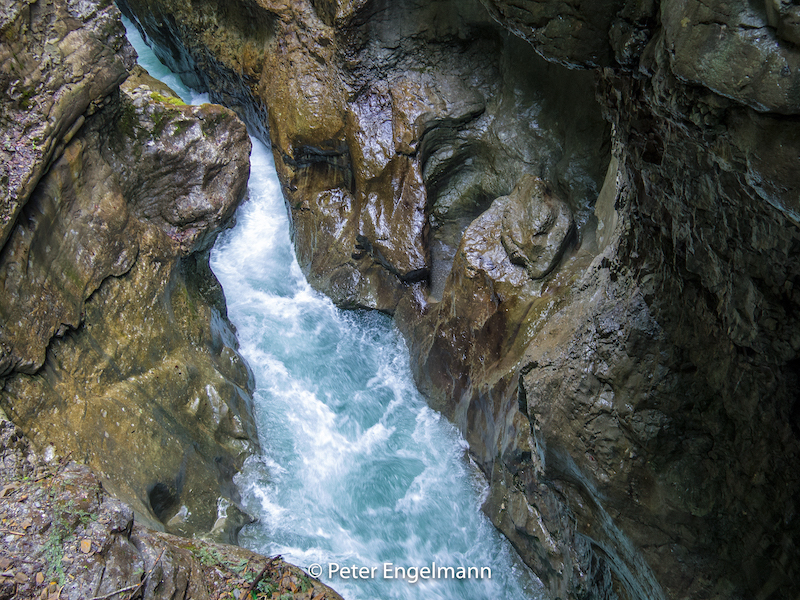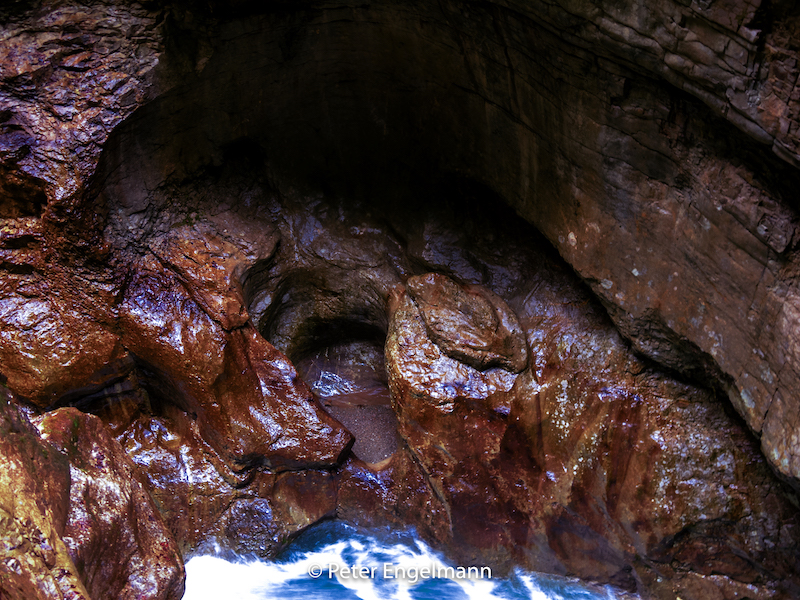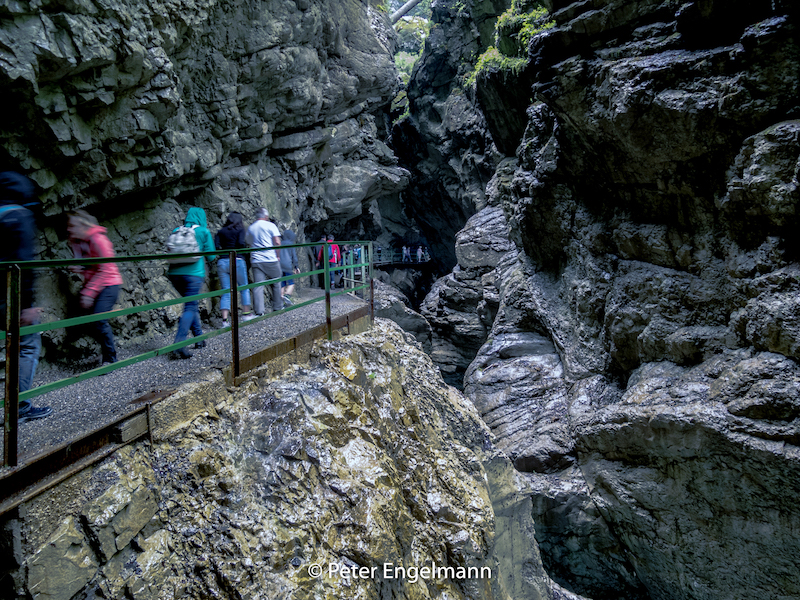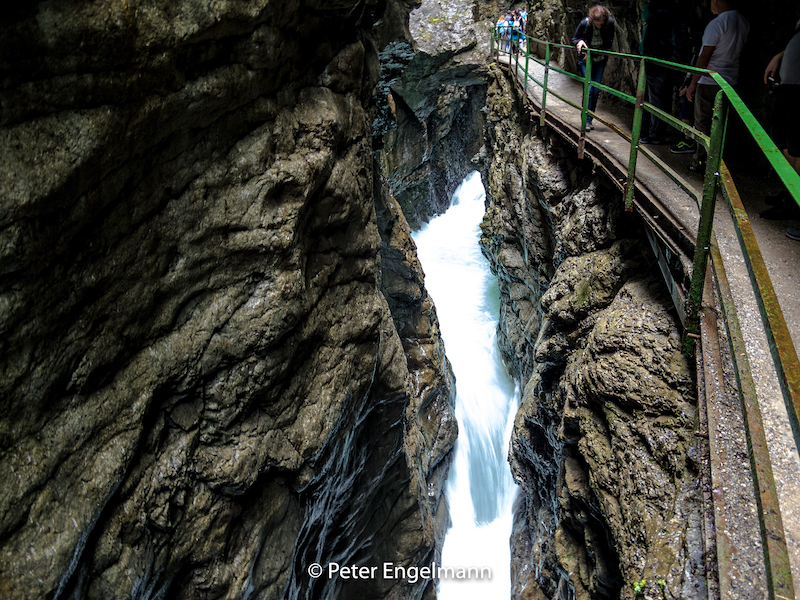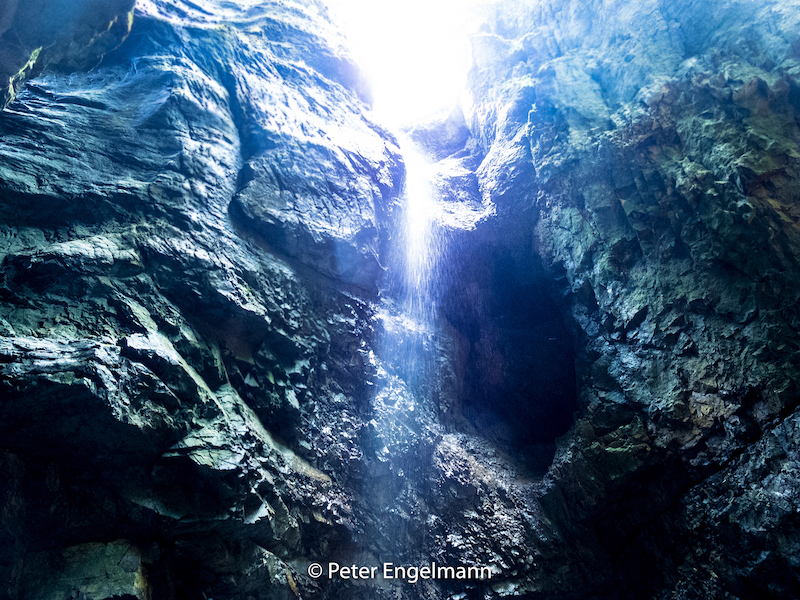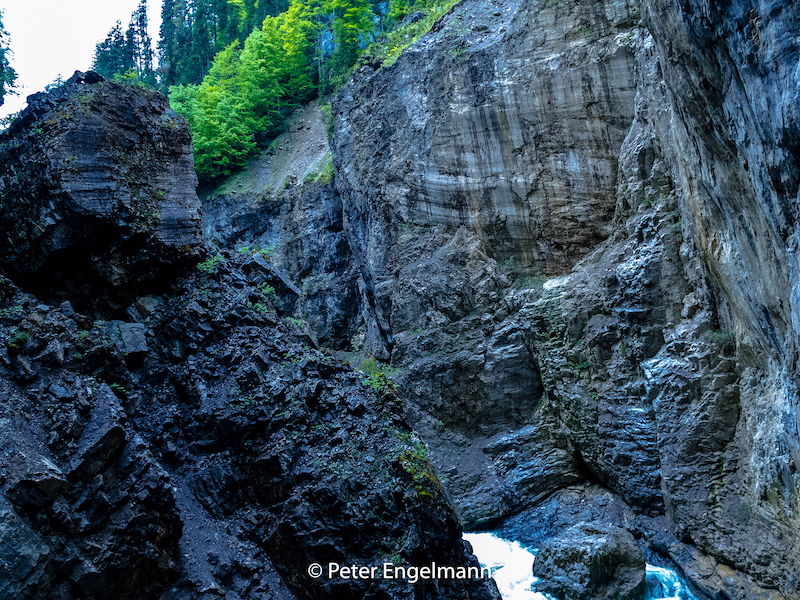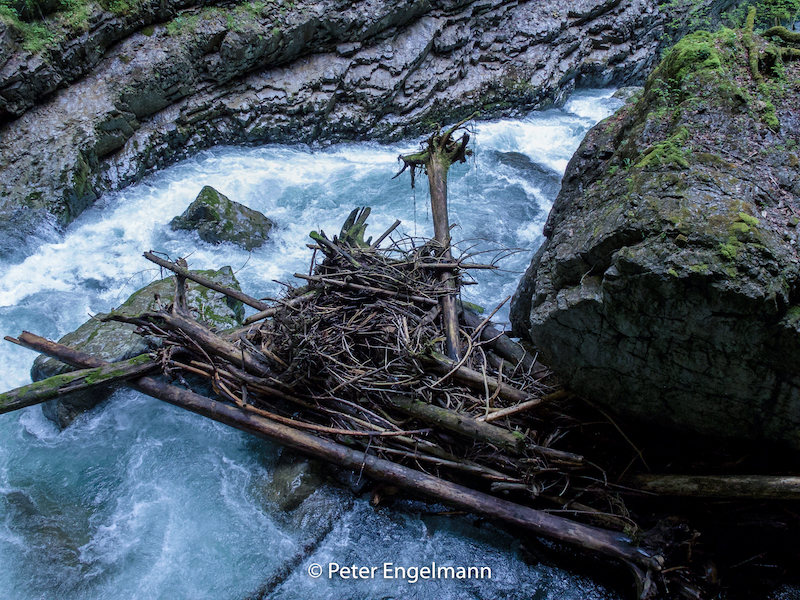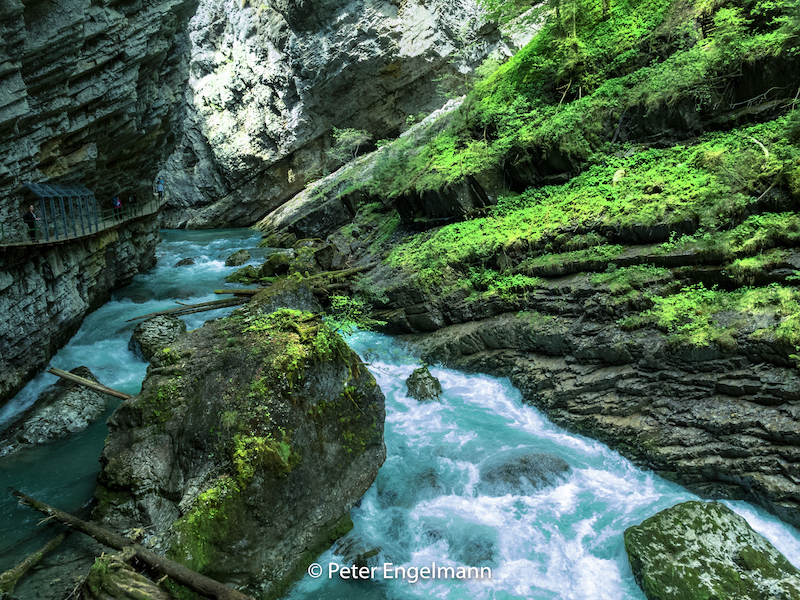The Magic Pools Of Oberstaufen: Buchenegger Wasserfälle
In the South-West of Bavaria is one of the most spectacular places of the Northern Alps located: The Buchenegger Wasserfälle with two huge turquoise pools of water and a strong waterfall of crystal clear water. It is really an impressing sight and an unforgettable experience.
The Buchenegger Waterfall is a wonderful motive for any photographer. Of course, on weekends during summer there are a lot of people around. This is because it’s not only something to watch but there is a five-meters deep pool where people can swim. Most of them, however, leave quickly since even in July and August the water is pretty cold. Furthermore, there are courageous young people who do a 30metre high jump from above the waterfall. It is a bit like Acapulco.
The Buchenegger Wasserfälle is part of an impressing canyon of the river Weissach. The Weissach river is coming from the Hochgrat-Mountain and cascades between two villages Buchenegg and Steibis. Further down the river reaches Oberstaufen, which is a famous and excellent tourist location. There are many hotels and attractions there. The landscape isn’t usually as dramatic as in other parts of the Bavarian Alps. Therefore the canyon of the Weissach and the Buchenegger Wasserfälle is an extreme contrast adding to an unforgettable experience.
Oberstaufen can be reached by train or by car. The trains commute frequently. Oberstaufen is located in the West of the Allgäu not far from Kempten and the Bodensee. It is also close to the Austrian border.
There are two paths leading to the Buchenegger Wasserfälle. One path begins near the parking-space in Buchenegg (a very narrow mountain road is leading there and it is crowded on some days – thus it is not recommended particularly for drivers who are not experienced to drive in mountain areas. Better use the parking spots in Steibis on the other side). There is another reason for this particularly for people who are not experienced hikers. The path is in very good shape but it is very steep. If you are afraid of heights or don’t feel safe walking in such rocky areas use the path coming from Steibis. This is much shorter and is most of the time an easy walk.
You can also use the bus from Oberstaufen to Steibis. The path begins near the stop “Berggaststätte Hirsch”. Before the path enters the canyon, there are two lovely farmed alps. One of them is the Alm Neugreuth, the other is the Alpe Neugschwend. These are very good places to rest and grab some tasty food before hiking down the 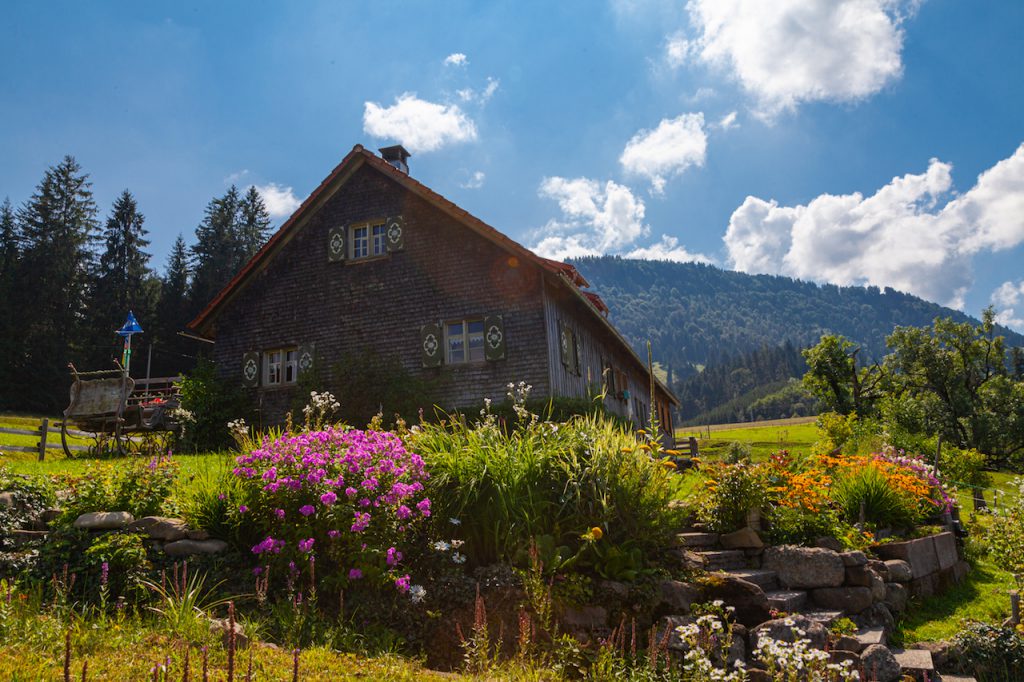 canyon.
canyon.
>
Entering the canyon is deeply impressing from the first moment. It is not only the white waters, the cliffs and the waterfall: There is a primaeval forest growing inside the canyon with a huge variety of trees and plants. This adds to the scenery and offers much more attractive motives.
The best time for catching the fantastic atmosphere is during summer even there are a lot of people around. The morning hours are a convenient time to do pictures because it isn’t so much crowded early in the day.
There are a few things to keep in mind when you want to do pictures of the waterfall and the pool: Your camera will often pointing southwards. Thus, in the middle of the day there is backlighting and strong contrast. Furthermore if you get closer to the waterfall or the wind gets stronger there is a misty spray of the waterfall. It happens easily that there are tiny droplets on the lens. Therefore it is good to always check the camera and clean the lens. Of course be careful because the terrain can be slippery.
